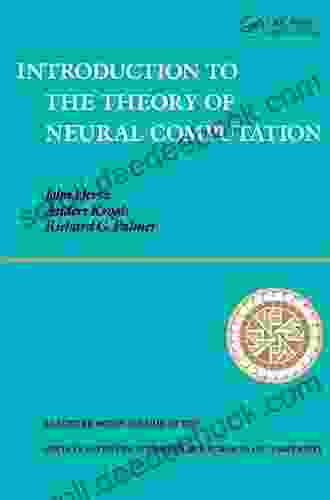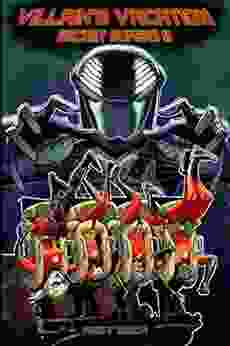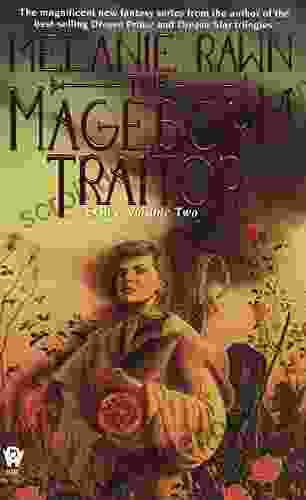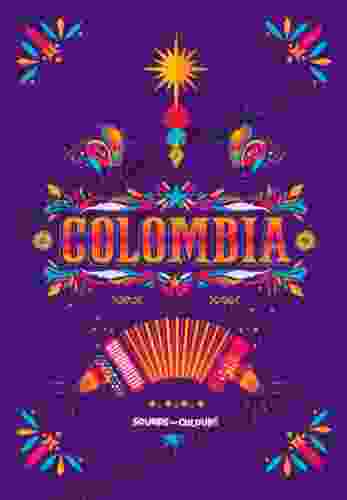Introduction to the Theory of Neural Computation: Santa Fe Institute Studies in the Sciences of Complexity

Neural computation is the study of how the brain performs computations. It is a relatively new field, but it has already made significant progress in understanding how the brain works. Neural computation is based on the idea that the brain is a complex system that can be understood by studying its individual components and how they interact. This approach has led to the development of a number of new theories about how the brain works, and it has also helped to identify new targets for drug development.
4.3 out of 5
| Language | : | English |
| File size | : | 13929 KB |
| Text-to-Speech | : | Enabled |
| Screen Reader | : | Supported |
| Enhanced typesetting | : | Enabled |
| Word Wise | : | Enabled |
| Print length | : | 352 pages |
The brain is made up of billions of neurons, each of which is a small cell that can communicate with other neurons through electrical and chemical signals. Neurons are organized into networks, and these networks can perform a wide variety of computations. The most common type of computation performed by the brain is pattern recognition. The brain is able to recognize patterns in both sensory data and motor commands. This ability is essential for survival, as it allows us to identify objects in our environment and to plan our movements.
Neural computation is also used for learning and memory. The brain is able to learn new things by modifying the connections between neurons. This process is called synaptic plasticity. Synaptic plasticity allows the brain to store memories and to adapt to new situations.
Neural computation is a complex and fascinating field of study. It has the potential to revolutionize our understanding of the brain and to lead to new treatments for brain disorders.
Applications of Neural Computation
Neural computation has a wide range of potential applications, including:
* Artificial Intelligence (AI): Neural networks can be used to create AI systems that can learn from data and make decisions. AI systems are already being used in a variety of applications, such as facial recognition, natural language processing, and medical diagnosis. * Robotics: Neural networks can be used to control robots. Neural network-controlled robots can learn to navigate complex environments and to perform a variety of tasks. * Medicine: Neural networks can be used to develop new drugs and treatments for brain disorders. Neural networks can also be used to diagnose brain disorders and to track their progression.
Neural computation is a new and rapidly growing field of study with the potential to revolutionize our understanding of the brain and to lead to new treatments for brain disorders. The future of neural computation is bright, and it is likely to have a major impact on our lives in the years to come.
4.3 out of 5
| Language | : | English |
| File size | : | 13929 KB |
| Text-to-Speech | : | Enabled |
| Screen Reader | : | Supported |
| Enhanced typesetting | : | Enabled |
| Word Wise | : | Enabled |
| Print length | : | 352 pages |
Do you want to contribute by writing guest posts on this blog?
Please contact us and send us a resume of previous articles that you have written.
 Chapter
Chapter Text
Text Story
Story Reader
Reader E-book
E-book Newspaper
Newspaper Paragraph
Paragraph Sentence
Sentence Bookmark
Bookmark Shelf
Shelf Bibliography
Bibliography Foreword
Foreword Synopsis
Synopsis Manuscript
Manuscript Scroll
Scroll Bestseller
Bestseller Library card
Library card Narrative
Narrative Biography
Biography Autobiography
Autobiography Memoir
Memoir Reference
Reference Encyclopedia
Encyclopedia Thesaurus
Thesaurus Resolution
Resolution Librarian
Librarian Card Catalog
Card Catalog Borrowing
Borrowing Research
Research Scholarly
Scholarly Reserve
Reserve Special Collections
Special Collections Literacy
Literacy Study Group
Study Group Thesis
Thesis Storytelling
Storytelling Awards
Awards Reading List
Reading List Book Club
Book Club Theory
Theory Joe Maroni
Joe Maroni Matt Jackson
Matt Jackson Rich Lowry
Rich Lowry Kathy Reichs
Kathy Reichs Tom Jokinen
Tom Jokinen S M Anderson
S M Anderson Kris Saknussemm
Kris Saknussemm Annette M Magid
Annette M Magid Lars Tvede
Lars Tvede Lorenzo De Maria
Lorenzo De Maria Lj Swallow
Lj Swallow Bella Hope Shiloh
Bella Hope Shiloh Lisa Jewell
Lisa Jewell Cheo Hodari Coker
Cheo Hodari Coker Ken Eidson
Ken Eidson Nina Raine
Nina Raine Gwen Petreman
Gwen Petreman Kim Carmichael
Kim Carmichael Seth G Jones
Seth G Jones Mary Beth Brace
Mary Beth Brace
Light bulbAdvertise smarter! Our strategic ad space ensures maximum exposure. Reserve your spot today!

 Marcel ProustWay Too Tall Children's Books: Giggletastic Stories for Tall Children and...
Marcel ProustWay Too Tall Children's Books: Giggletastic Stories for Tall Children and... Rudyard KiplingFollow ·8.3k
Rudyard KiplingFollow ·8.3k Evan SimmonsFollow ·8.5k
Evan SimmonsFollow ·8.5k Gustavo CoxFollow ·9.6k
Gustavo CoxFollow ·9.6k Grant HayesFollow ·2.5k
Grant HayesFollow ·2.5k Sean TurnerFollow ·19.6k
Sean TurnerFollow ·19.6k Christian BarnesFollow ·11.7k
Christian BarnesFollow ·11.7k Stanley BellFollow ·2.6k
Stanley BellFollow ·2.6k Billy FosterFollow ·4.9k
Billy FosterFollow ·4.9k

 Howard Powell
Howard PowellDk Workbooks Science Third Grade: An In-Depth Exploration...
Science education plays a...

 Everett Bell
Everett BellLearn to Play Bluegrass Dobro Guitar: A Comprehensive...
: Bluegrass Dobro, A Story of...

 Jeffrey Cox
Jeffrey CoxHow the Raccoon Got His Mask
The raccoon, with its...

 George Bell
George BellHannah Meets Ruby Hannah Out West: An Adventure-Filled...
Hannah Meets...
4.3 out of 5
| Language | : | English |
| File size | : | 13929 KB |
| Text-to-Speech | : | Enabled |
| Screen Reader | : | Supported |
| Enhanced typesetting | : | Enabled |
| Word Wise | : | Enabled |
| Print length | : | 352 pages |












